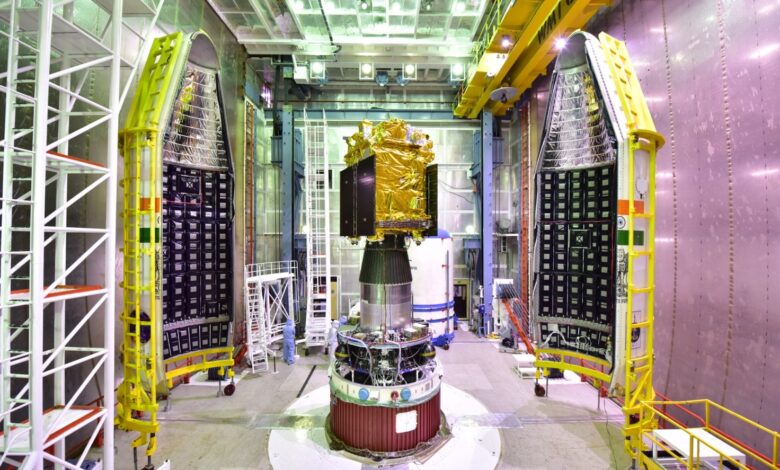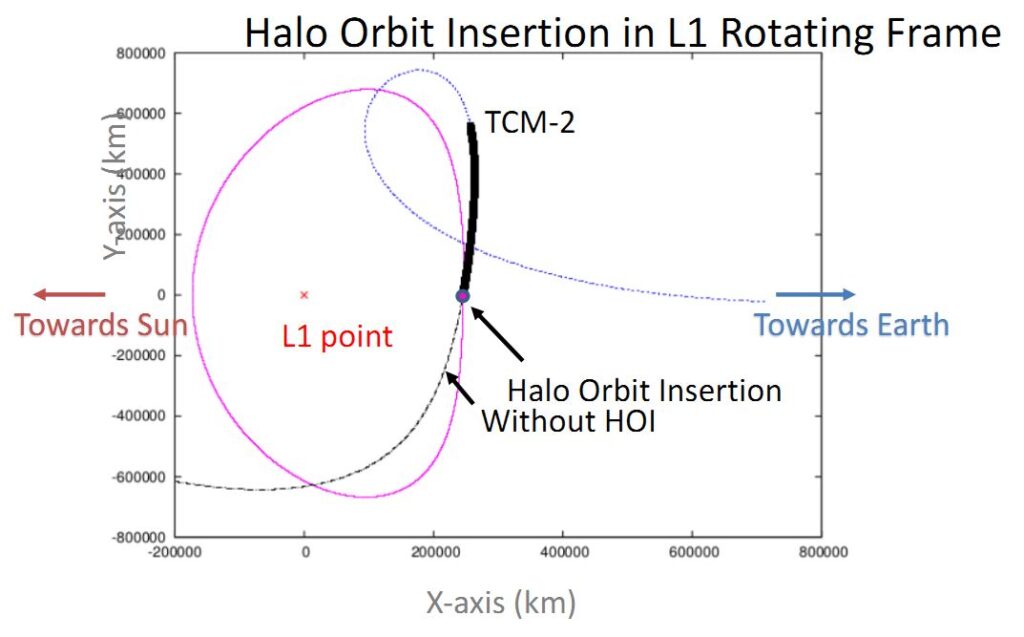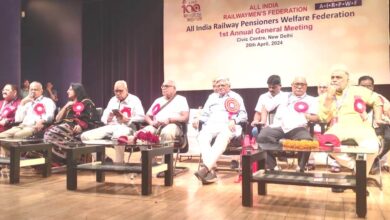Aditya-L1 Mission: Successful Halo-Orbit Insertion Marks a Milestone in India’s Solar Exploration

In a remarkable achievement for the Indian Space Research Organisation (ISRO), the Halo-Orbit Insertion (HOI) of the Aditya-L1 solar observatory spacecraft was successfully executed at approximately 16:00 Hrs on January 6, 2024 (IST). The crucial final phase of the maneuver involved a brief firing of control engines, positioning Aditya-L1 into its designated orbit around the Sun-Earth Lagrange point (L1).
Aditya-L1’s orbit is a periodic Halo orbit, situated approximately 1.5 million km from Earth along the constantly moving Sun-Earth line. With an orbital period of about 177.86 Earth days, this unique Halo orbit ensures a mission lifetime of five years, minimizing the need for station-keeping maneuvers, reducing fuel consumption, and providing an uninterrupted view of the sun.
The primary objective of the Aditya-L1 mission is to observe and understand the chromospheric and coronal dynamics of the Sun continuously. Placing Aditya-L1 in a Halo orbit around L1 offers several advantages over a Low Earth Orbit (LEO), including a smooth Sun-spacecraft velocity change, suitability for helioseismology, existence outside the Earth’s magnetosphere for in-situ solar wind and particle sampling, and continuous observation of the Sun with unobstructed views.
Precision in Halo Orbit Insertion: A Critical Mission Phase
The meticulous Halo orbit insertion process began as the spacecraft crossed the XZ plane in the Sun-Earth-L1 rotating system with the required orbital state. Nullifying the X and Z velocity components and achieving the required Y-velocity in the L1 rotating frame for the Halo orbit was crucial. The targeted Halo orbit for Aditya-L1 involved specific semi-axes dimensions (Ax: 209200 km, Ay: 663200 km, Az: 120000 km).
This insertion marked a critical mission phase, demanding precise navigation and control. Success in the insertion process demonstrated ISRO’s proficiency in complex orbital maneuvers, boosting confidence for future interplanetary missions. Continuous monitoring and adjustment of the spacecraft’s speed and position using onboard thrusters ensured a successful Halo orbit insertion.
Aditya-L1, designed and developed at UR Rao Satellite Centre (URSC), involved contributions from various ISRO centers. The scientific payloads on board were developed by Indian scientific laboratories, including IIA, IUCA, and ISRO. Launched on September 2, 2023, aboard PSLV-C57 from SDSC SHAR, Aditya-L1 embarked on an extraordinary journey towards the Sun-Earth-L1 Lagrange point.
Journey Highlights and Maneuvers
The spacecraft’s elliptical parking orbit (EPO) of 235.6 km by 19502.7 km set the stage for a series of maneuvers. The onboard propulsion system facilitated progressive orbital size increases, moving Aditya-L1 toward the L1 point. Five liquid engine burns (LEB) during the Earth orbit phase gradually raised the apogee of the EPO to achieve the desired trajectory.
Critical maneuvers, including the trans-L1 injection (TL1I) maneuver and TCM-1 and TCM-2 burns, were executed to minimize incremental velocity addition and address errors during the trajectory. The spacecraft underwent a cruise phase lasting approximately 110 days to reach the condition before the targeted Halo-Orbit Insertion on January 6, 2024.
Prime Minister Modi Applauds the Achievement
Indian Prime Minister Narendra Modi took to Twitter to celebrate the accomplishment, stating, “India creates yet another landmark. India’s first solar observatory Aditya-L1 reaches its destination. It is a testament to the relentless dedication of our scientists in realizing among the most complex and intricate space missions. I join the nation in applauding this extraordinary feat. We will continue to pursue new frontiers of science for the benefit of humanity.”
The successful insertion of Aditya-L1 into its designated Halo orbit represents a significant leap forward in India’s space exploration capabilities, reaffirming its position as a formidable player in the field of solar observation and scientific research.






